- Physically short channels can use digital signals.
- Simpler for digital equipment to send and receive.
- Used inside the box.
- Used for short distance connections, like USB.

- When you don't want to use a digital signal.
- Over distance, digital signals spread out and lose their sharp edges.
- Sinusoidal signals travel much better.
- Radio signals are already sinusoidal.
Nature rarely makes sharp corners.
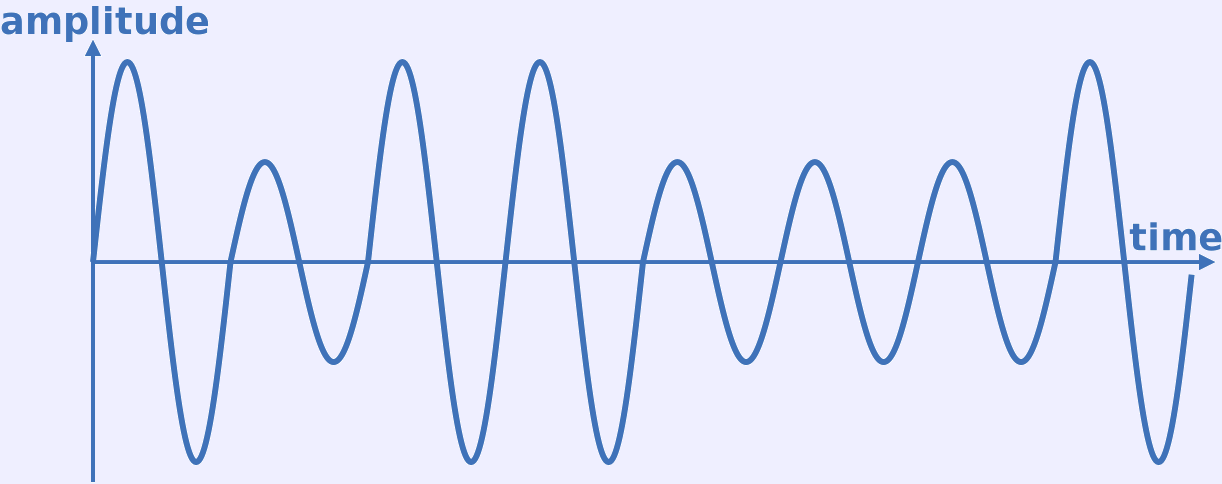
- Over distance, digital signals spread out and lose their sharp edges.
- Modulation
- Send information by manipulating a carrier.
- A carrier is a sine wave of some chosen shape.
- A data signal is used to manipulate the carrier. Can manipulate any
combination of
- Amplitude
- Frequency
- Phase
- Examples
- Analog Modulation.
- Digital Modulation (or keying).
- Combinations.
- Example drawings are exaggerated.
- Signals usually must reside within a narrow channel (range of frequencies), so frequency shifts must be small.
- Amplitude must stay large enough for easy detection, so only small reductions from the maximum are in order.
- Frequency and phase are not usually combined. Difficult for the receiver to distinguish.
- Constellation Diagrams.
- A way to represent a modulation using amplitude and phase.
- The phase is represented by the radial distance from the positive x axis.
- The amplitude is the linear distance from the origin.
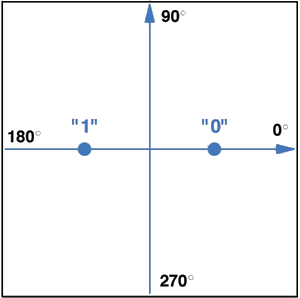
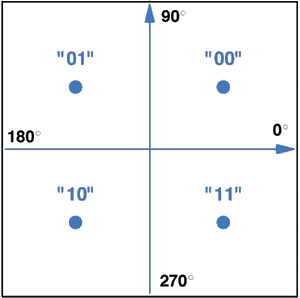
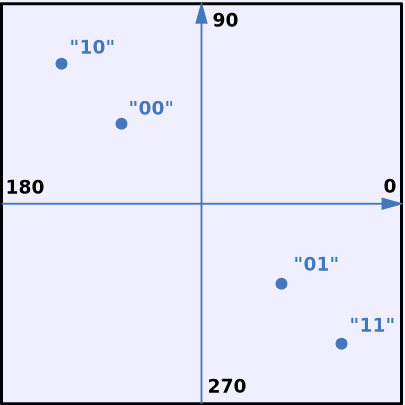
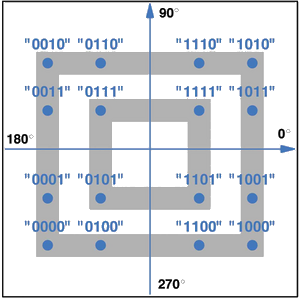
1 amp, 2 phases 1 amp, 4 phases 2 amps, 2 phases 2 amps, 12 phases
(16 of 24 combos used)
- Modems.
- Modem is a contraction of “modulator-demodulator”.
- Occasionally devices are made separately, but almost never.
- So the modulator and demodulator are in the same box, called a modem.

- Modems are needed for long wired connections, optical connections, and radio (including WiFi).
- Modems may be called something else.
- Dial-up Modems.
- Dial-up modems are a hack to deal with the situation at the end of
the 20th century.

- You would like to have lots of digital connections to carry Internet traffic to pretty much every home and business. You don't.
- Creating them takes much time and money.
- You do have lots of telephone landlines designed to carry an analog voice signal.
- The voice channel does not have much bandwidth:

- The range of usable frequencies, 600-3000, gives 2400 Hz bandwidth.
- Fancy coding schemes help a lot.
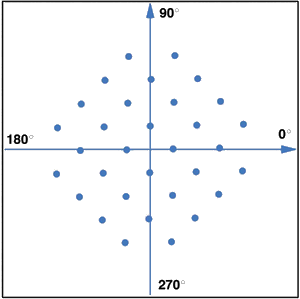
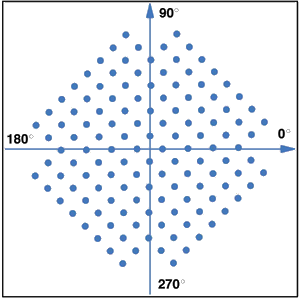
V.32, 32 combos
9600bpsV.32bis, 128 combos
14,400bps
- Dial-up modems are a hack to deal with the situation at the end of
the 20th century.